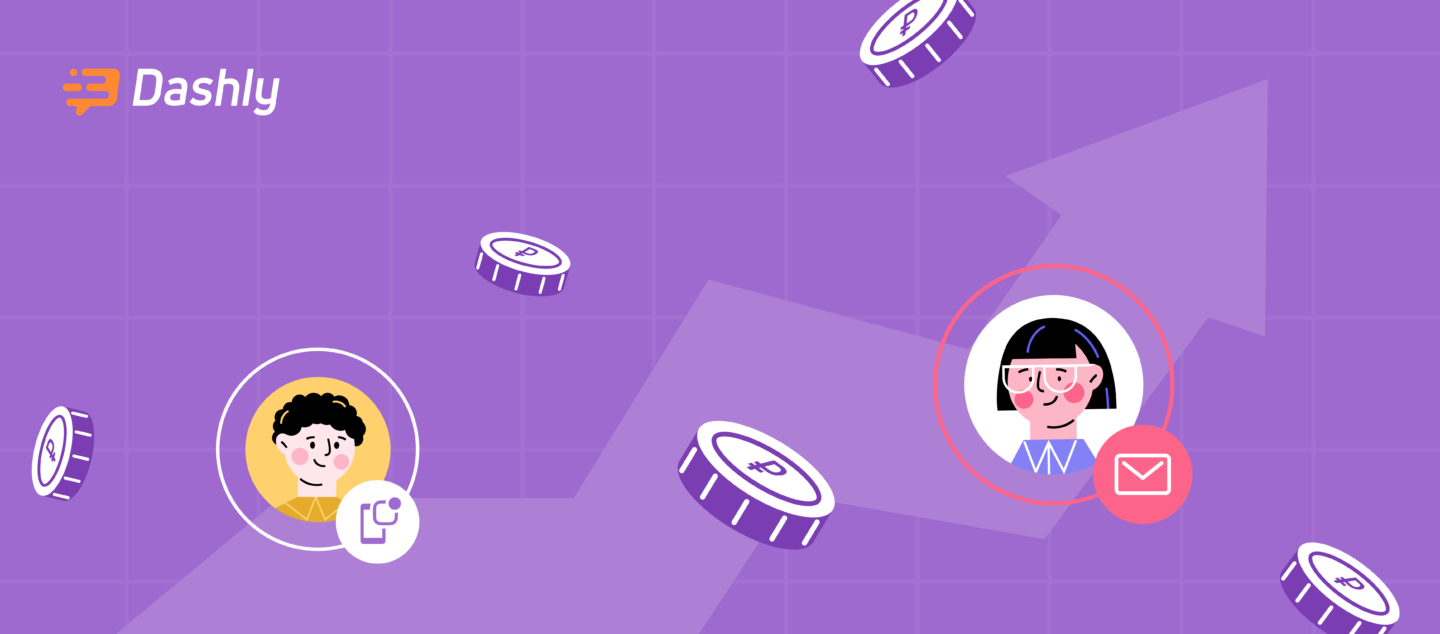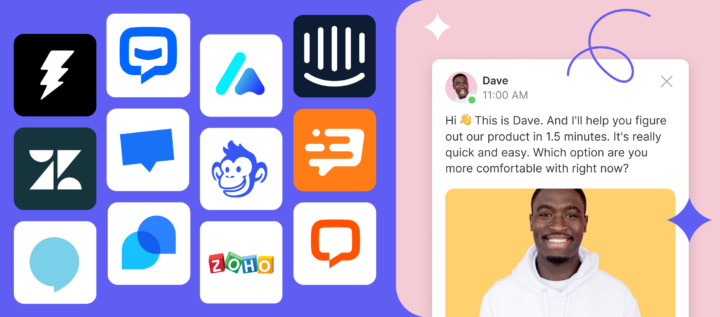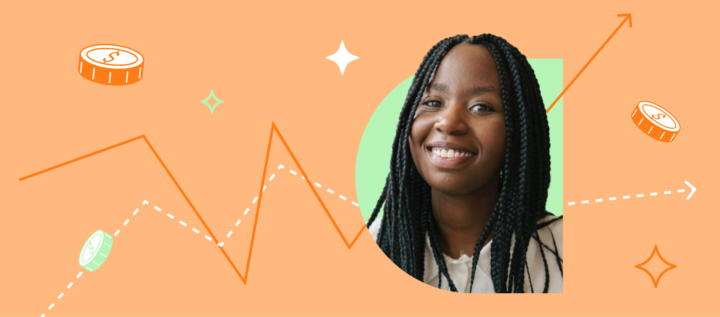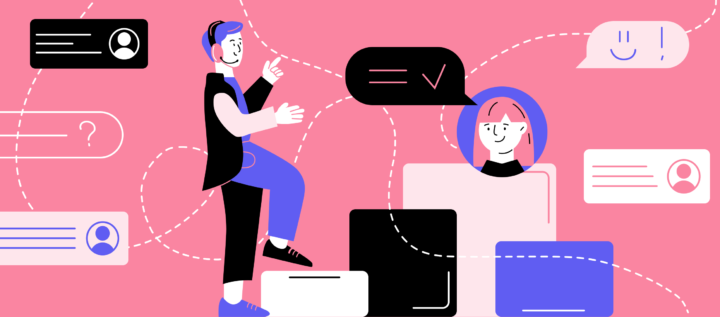10 Game-Changing Benefits Of Sales Funnel You Should Consider In 2025

Are you tired of struggling to make sales and grow your business? Maybe you’ve heard about sales funnels but feel overwhelmed by the setup. A lot of people think it has to be perfect from the start.
But here’s the truth: it doesn’t.
Building a funnel takes time and tweaks. Look at the data, adjust, and keep moving. The purpose of a funnel is to guide potential customers from curiosity to conversion.
The best part? Once set up, it works for you, helping you nurture leads and boost sales.
In this article, we’ll explore the benefits of a sales funnel and show you why it’s the secret weapon your business needs. From streamlining your customer’s journey to improving lead generation, you’ll see the impact. Let’s dive into the 10 benefits of a sales funnel that can change your business forever 👇
1. Helps Streamline the Customer Journey
Setting up a sales funnel is like giving your customers a roadmap for their buying journey. It guides them step by step, ensuring they don’t get lost.
Let’s dive deeper into a case from one of our SaaS clients. They had a basic funnel but faced challenges in smoothly guiding leads toward booking meetings. Potential customers engaged with their content but weren’t progressing through the funnel efficiently. Leads got stuck in the middle of the journey, and the company struggled with turning that engagement into concrete actions, like scheduling a meeting.
As a result, many leads fell off, leaving valuable opportunities untapped.
To address this, they reworked their funnel, focusing on key touchpoints in the customer journey. They refined their landing pages and adjusted the content in their email sequences to target different stages more effectively.
For example:
- Early-stage visitors were now provided with more educational content, nurturing their curiosity and moving them toward interest.
- Mid-stage leads received personalized case studies and product information to help them make informed decisions.
- Late-stage leads were prompted with a direct call-to-action, offering easy access to book a meeting.
This funnel segmentation ensured that each lead received the right message at the right time.
The result? A 30% improvement in how quickly leads progressed to booking meetings. The funnel didn’t just guide leads — it optimized the journey, ensuring no one got lost.
Key changes that streamlined their customer journey:
- Personalized messaging at critical stages kept leads engaged and interested.
- Clear calls-to-action helped guide leads from content engagement to scheduling meetings without friction.
- Automated follow-ups ensured no opportunity slipped through the cracks, boosting lead progression.
This structured approach allowed the company to turn casual visitors into serious prospects much more efficiently, improving engagement and meeting conversion rates.
Read also: 16 Essential Sales Funnel Metrics You’re Probably Not Tracking (But Should Be)
2. Sorting and Ranking Your Leads
Not all leads are created equal. Some are ready to take action, while others need more nurturing. A sales funnel helps you identify and prioritize those most likely to book a meeting.
Let’s look at one of our SaaS clients who had this problem. Their funnel was generating leads, but sorting and ranking them was inefficient. They couldn’t easily distinguish between leads who were ready for a sales conversation and those who needed more time. This led to wasted time chasing unqualified prospects while potential high-quality leads slipped through the cracks.
Read also: Create a High-Converting SaaS Sales Funnel in 5 Simple Steps
Here’s how the sales funnel helped them sort and rank their leads more effectively:
- Lead Scoring System: The funnel began tracking key interactions like website visits, content downloads, and email engagement. Each of these actions was assigned a score, helping to quantify how interested and engaged a lead was. This created a clear ranking system, making it easy to see which leads were more likely to convert.
- Segmentation: Leads were automatically segmented into different categories based on their score. For example, leads with higher engagement were flagged as “Sales Qualified Leads” (SQLs), meaning they were ready for a sales conversation. Meanwhile, leads with lower engagement were labeled as “Marketing Qualified Leads” (MQLs), needing more nurturing before being handed over to the sales team.
- Personalized Nurturing: The funnel provided personalized content based on the lead’s score and stage. SQLs received targeted calls to action like “Book a Meeting,” while MQLs were sent educational resources to build trust and move them closer to a decision.
- Automated Follow-Ups: The system automatically triggered follow-up actions based on the lead’s score. For high-quality leads, reminders were sent to book meetings. For lower-ranked leads, nurturing emails were scheduled to keep them engaged and moving through the funnel.
As a result, the client saw a 25% improvement in their lead sorting and ranking process. They could now focus on the leads most likely to convert, which doubled the efficiency of moving qualified leads toward meetings.
- Better lead ranking: Identified top prospects faster.
- Focused efforts on high-quality leads: The sales team spent less time on cold leads.
- Improved meeting conversion rates: Higher-quality leads resulted in more booked meetings.
This structured funnel allowed the client to focus their resources where it mattered most, driving better results and saving time.
3. Improved Customer Targeting
One of our online EdTech clients was struggling with effectively targeting their leads. They had plenty of visitors and sign-ups, but they couldn’t get the right message to the right people at the right time. Leads would engage, but they weren’t moving forward, and the company was losing potential customers because its messaging wasn’t personalized enough.
So, we helped them restructure their sales funnel. The key to improving their customer targeting was breaking the funnel into three stages:
This allowed the company to target leads more accurately based on where they were in their journey.
Using behavioral tracking, the funnel scored each lead’s actions — whether they visited a course page, downloaded a syllabus, or clicked on pricing. This gave the company insight into each lead’s interest level, helping them know exactly what content to deliver.
Once leads were segmented, the funnel automatically sent personalized content based on their score and stage. Awareness leads received educational materials, Consideration leads got product comparisons, and Decision leads were invited to book a meeting.
This personalized targeting resulted in a 40% increase in booked meetings because each lead got exactly what they needed when they were ready.
4. Improved Lead Generation
A well-built sales funnel is crucial for lead generation, as it helps attract and filter the right leads from the start.
Let’s focus on how a strong funnel improved lead generation for a fitness app client struggling to bring high-quality leads.
At the top of the funnel, the problem wasn’t just attracting visitors — it was attracting the right visitors. The funnel wasn’t generating leads ready to engage with the product or convert into meetings.
Here’s how the funnel improved lead generation:
- Targeted Lead Magnets: The funnel started with highly specific, attractive offers, like free workout plans, app trials, or exclusive fitness guides. These lead magnets were designed to draw in individuals genuinely interested in fitness and the app’s offerings rather than casual browsers. This refined approach at the top of the funnel brought in higher-quality leads from the outset.
- Optimized Landing Pages: Each lead magnet was paired with a well-crafted landing page communicating the offer’s value. The funnel ensured these pages were optimized with strong calls to action, making it easy for visitors to sign up and enter the funnel.
- Audience Segmentation: The funnel segmented leads based on their interests and actions, which meant it was attracting leads from different channels and focusing the right messaging on each group. For example, fitness enthusiasts from social media campaigns were directed to specific offers tailored to their needs.
- Data-Driven Ad Campaigns: By analyzing the funnel’s performance, the client could focus ad spending on the highest-performing lead generation channels. The funnel’s ability to track which sources brought in the most engaged leads helped refine their advertising strategy, generating even more qualified prospects.
Through these lead generation-focused improvements, the fitness app doubled the number of high-quality leads entering the funnel. This optimized funnel ensured that only leads who showed genuine interest and engagement with the app offerings were drawn in from the beginning, making the lead-generation process far more effective.
5. Improves Conversion Rates
A well-built sales funnel doesn’t just attract leads — it plays a critical role in improving conversion rates by guiding potential customers through a structured journey.
Let’s focus on how a fitness app client used their funnel to significantly boost conversion rates, turning more leads into booked meetings.
Initially, their funnel brought in leads, but the conversion rate — turning those leads into actual meetings — was low. The problem wasn’t just generating leads but getting those leads to take action and move further down the funnel.
Here’s how their sales funnel helped improve conversion rates:
- Personalized Content for Each Funnel Stage: The funnel delivered tailored content based on where the lead was in their journey. Early-stage leads received educational materials like fitness tips, while more engaged leads were sent specific product benefits and user success stories. By serving the right message at the right time, the funnel nudged leads closer to booking a meeting, boosting conversion rates.
- Behavioral Triggers: The funnel tracked key actions — like whether a lead signed up for a free trial or interacted with workout tips. These behaviors triggered personalized follow-up emails that addressed the lead’s specific needs. This ensured that every follow-up was relevant, pushing leads to take the next step, whether signing up for a consultation or scheduling a demo.
- Clear Calls-to-Action: The funnel improved the way calls-to-action were presented. Instead of generic messages like “Contact Us,” leads received specific CTAs such as “Book Your 1:1 Fitness Consultation” or “Try a Free 7-Day Plan.” These CTAs were strategically placed at key touchpoints to motivate action, leading to higher conversions.
- Mid-Funnel Nurturing: Leads who showed interest but hadn’t yet converted were targeted with nurturing campaigns. This mid-funnel strategy ensured that leads who needed more time or information stayed engaged and were reminded to book a meeting or try the service. This nurturing process kept leads from falling off, improving the conversion rates over time.
By optimizing these areas of the funnel, the client saw a 50% increase in conversion rates. The personalized content, behavioral tracking, and clear CTAs ensured that more leads completed the journey from initial interest to action, booking more meetings.
Read also:
Unlock the Power of the Inverted Funnel: A Guide to Upside Sales Growth
Sales Funnel Statistics 2024: Essential Data to Fuel Your Company’s Growth
6. Better Allocation of Resources
A well-structured sales funnel isn’t just about attracting leads — it’s about focusing your resources where they’ll make a difference.
Let me share how one of our fitness app clients nailed this with their funnel.
At first, they were all over the place — spending time, money, and energy on every part of the funnel. But not every stage needs the same level of attention, right? So, they needed the funnel to help them focus on what moved the needle.
Here’s how the funnel helped them:
- Found the hot leads fast. The funnel tracked which leads were most active — like engaging with the app’s features or signing up for free trials. So, instead of wasting time on everyone, their team focused on leads most likely to book meetings.
- Shifted ad spend smartly. The funnel showed which marketing channels brought in the most engaged leads. They cut back on ads that weren’t working and doubled down on the ones that drove real results — without increasing the budget.
- Automated the slow movers. Not all leads are ready to chat right away, and that’s fine. The funnel handled follow-ups and nurturing automatically, letting the sales team focus on the hottest prospects.
- Put resources where they counted. They realized most conversions were happening mid-funnel. So, they shifted more of their time and budget there, making sure they hit leads at the right moment.
By letting the funnel guide their resource allocation, they improved efficiency by 20%, cutting down on wasted efforts and booking more meetings.
7. How Sales Funnel Advantages Businesses by Saving Time and Money
Let’s keep it real — sales funnels are lifesavers when it comes to getting your team focused and saving both time and money.
One of the Dashly clients — EdTech company, was spending way too much time chasing leads who weren’t ready to decide. They needed a sales funnel to help them prioritize the right leads and streamline their process.
Here’s how the sales funnel made a difference:
- Automated follow-ups for engaged leads. Instead of manually following up with every lead, the funnel automatically sent reminders and updates to those who’d already shown interest — through a demo session or a discovery call. This took a ton of pressure off the sales team, giving them back valuable hours.
- Ranked leads by readiness. The funnel tracked each lead’s actions — like attending a webinar or asking for more info — and scored them accordingly. The sales team knew exactly who to focus on, ditching the cold leads and concentrating on the ones ready to talk business.
- Less time on pointless calls. With the funnel identifying which leads weren’t ready to commit, the sales team avoided wasting time on dead-end conversations. Instead, they zeroed in on the prospects more likely to book that next meeting.
- Faster decisions, faster deals. The funnel sent automated nudges — like demo reminders or enrollment FAQs — at just the right time, helping leads make decisions faster. This meant the sales team spent less time warming up leads and more time closing deals.
In such a way, a company saw a 30% boost in sales team efficiency. They cut down on wasted time, automated the follow-up process, and focused only on the leads that mattered most. All thanks to a smart sales funnel that kept things moving smoothly.
8. Precise Forecasting of Sales Volume
When it comes to precise sales volume forecasting, a solid sales funnel paired with strong analytics is key.
Let me walk you through how one of our Dashly clients used its funnel to make accurate sales predictions and plan better.
This client was struggling to forecast how many leads would turn into actual sales. They knew how many people were entering the funnel but had no idea how many would convert to booked meetings or deals. Their forecasting was more guesswork than data-driven, which made planning a nightmare.
Here’s how their sales funnel, powered by analytics, changed everything:
- Tracking every step. The funnel monitored every move — from the first inquiry to the final decision. By analyzing how many leads converted at each stage, the client could predict how many leads at the top of the funnel would result in a booked meeting at the bottom. This gave them a clear picture of their pipeline.
- Analyzing past performance. Using historical data, the funnel helped them see patterns. For example, they could predict that, on average, 20% of leads who attended a demo would book a follow-up meeting. These insights allowed them to fine-tune their strategies based on real numbers, not just assumptions.
- Identifying bottlenecks. The funnel highlighted which stages leads were dropping off, allowing the client to forecast more precisely. For instance, they noticed a dip in leads converting from demo to follow-up calls. With this info, they tweaked that stage, boosting conversions and tightening their forecasts.
- Data-driven decisions. The funnel didn’t just stop at forecasting. It lets them make smarter decisions, like when to hire more sales reps or ramp up marketing. They could predict when they’d hit their target sales numbers and prepare their team to meet demand.
As a result, this client improved their forecasting accuracy by 35%. Thanks to the sales funnel and Dashly’s analytics, they had a clear, data-driven way to predict how many leads would turn into sales and could plan their resources and efforts accordingly.
9. Increased Customer Loyalty
A strong sales funnel is essential for increasing customer loyalty, helping to transform one-time buyers into loyal, repeat customers. Here’s how one of our clients leveraged their funnel to boost customer retention:
- Post-purchase follow-ups. After a customer purchased, the funnel initiated personalized follow-ups, providing helpful product tips and asking for feedback. This extra step kept the connection alive and showed customers they weren’t forgotten after the sale.
- Customized suggestions. By monitoring customer behavior, the funnel identified opportunities to suggest upgrades or complementary services. These personalized recommendations made customers feel understood, encouraging them to continue engaging with the brand.
- Consistent touchpoints. Automated reminders and helpful updates ensured the company stayed top of mind for customers, without requiring manual effort. Whether it was a check-in or product news, these touchpoints kept the relationship strong.
- Exclusive rewards. The funnel triggered loyalty perks, such as discounts or early access to new features. By rewarding loyal customers, the company created a sense of value and appreciation that encouraged continued engagement.
As a result, the client experienced a 25% increase in repeat business. The funnel helped maintain meaningful customer relationships, providing ongoing value and reinforcing their loyalty to the brand.
10. Boosts Sales Revenue
The ultimate goal of any sales funnel is to boost revenue. By ensuring a smooth journey for leads and optimizing each step, you can significantly increase your sales.
One of our SaaS clients saw a 45% increase in revenue after optimizing their funnel. Our solution doubled their conversion rates at key stages, leading to more booked meetings and, ultimately, more sales.
FAQs on benefits of a sales funnel
Why is the funnel important?
The benefits of a sales funnel go beyond just guiding customers — it helps you structure your sales process in a way that maximizes efficiency. By understanding your customers better, you can target them with the right message, improve lead nurturing, and ultimately drive higher conversion rates, leading to increased sales. Without a funnel, your efforts are scattered and less effective.
How does a sales funnel help a business?
The uses of a funnel include more than just guiding customers — it streamlines and optimizes the entire sales process. It helps you qualify leads faster, automate follow-ups, and deliver personalized content at each stage of the journey. By doing this, you can move leads from interest to conversion more efficiently, reducing the time spent on unqualified prospects and increasing the focus on high-quality leads ready to buy.
How can a sales funnel improve my conversion rate?
The funnel purpose is to strategically move leads through the buying process by delivering the right content at the right time. By segmenting leads based on behavior, the funnel allows you to target potential customers with messages that meet their needs. This tailored approach pushes them toward purchasing, significantly improving your conversion rates. The funnel removes the guesswork and makes the buyer’s journey smoother, increasing the likelihood of a sale.
How long does it take to see results from a sales funnel?
The benefits of a sales funnel can start showing up in a matter of weeks, especially if you have a well-structured process in place. However, continuous tweaking and data analysis are key to long-term success. You must monitor how leads move through the funnel and optimize accordingly. Initial results may include more engagement and meetings booked, while long-term results will include better conversion rates and increased sales.
Read also:
– Mastering B2B Sales Funnel Stages for Higher Conversions;
– 10 inspiring sales funnel examples to boost your business growth;
– Mastering sales funnel analysis: step-by-step guide, tools, and examples;
– Top 15 Sales Funnel Apps and Software Tools You Need;
– Ultimate guide to an AI sales funnel: the best tips, tools and common mistakes to avoid.





![Growth Marketing, o que é? O guia definitivo [explicado por um hacker de crescimento]](https://www.dashly.io/blog/wp-content/uploads/2023/04/The-ultimate-guide-to-growth-marketing-explained-by-a-growth-hacker-720x317.png)


